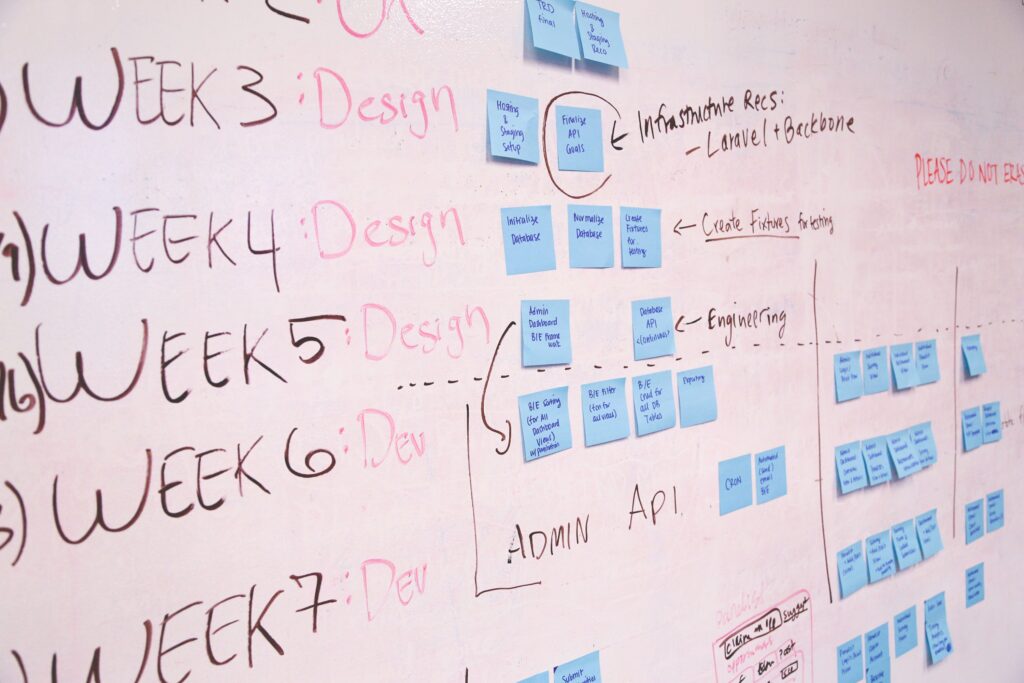Resource management is a defining factor in determining whether a project will arrive on time and within budget. A reported 11.4% of all resources are wasted simply because project management, control processes, and expertise aren’t up to scratch – including human resources.
Whether you’re a manager, project lead, manager, or business owner undertaking a new initiative, resource allocation dramatically impacts and affects the overall success of your project. We’ve spoken before about best practices for managing a remote team and the required expertise and focus.
Following this advice will help you maximize the benefits of your available resources.
There’s one issue, though. Sometimes the demand for skilled labor is very high, and sometimes the need for specific expertise is low. Even with the best resource planning in the world, it’s challenging to navigate seasonal demand or projects that fluctuate widely.
But that’s not to say it’s impossible. Depending on your specific situation, there are several steps you can take.
Solution 1: Preparing for go-time

Sometimes, you can predict the busiest times when you’ll need more resources. If you have a project with a predetermined start and end date – and a short time frame – it’s essential that you start scheduling as soon as possible.
Think about your employee base. What skills will be helpful all year round, and what skills are only necessary during this project? If you need any full-time employees, it’s a good idea to undertake this exercise first, as it’s often more time-consuming and will require a more extended onboarding period.
To make the most of any freelance expertise, try hiring them a week before you predict the heavy work will come in. Scheduling and executing the onboarding should be quick if you hire through the proper channels, but having space to bring them up to speed with your company, introduce them to the team, and sort out any glitches can ensure you meet your resource demand without any hiccups.
Solution 2: Improve communication channels

For any digital enterprise, communication is critical for optimum resource management efficiency.
You may think you’re incredibly short-staffed – until you review your current communication practices. Statistics show that 86% of employees and executives believe poor communication and collaboration is the main contributor to workplace failures. Even more shockingly, effective communication can positively affect productivity by up to 25%. These are just a couple of examples of why it is essential to strengthen communication before you do anything else in your company.
If you’re managing a remote, blended team, beneficial communication is vital. Take the time to audit your communication practices to spot areas for improvement. This can range from how you assign and organize briefs to the channels your team uses. You can also set up one-on-ones with individual team members to receive feedback and identify areas of improvement.
It also gives you a better view of the extra help you need, meaning you can then carry out more concentrated freelance searches so you can scale up and down in a more agile manner.
Solution 3: Adopt agile approaches

The Agile framework came originally from the world of software development but has now become a favorite approach for company project managers. The aim is to collaborate throughout a project and work in iterations rather than established deadlines.
It was developed in 2001, and the Agile Manifesto of Software Development leans on four main ideas and values:
- Individuals and interactions over processes and tools
- Working software over comprehensive documentation
- Customer collaboration over contract negotiation
- Responding to change by following a plan
These examples can be undertaken even if your project doesn’t involve software development, although they are more effective with projects that have concrete deliverables. If you’re delivering a service, other approaches might be more suited.
This approach has many benefits, not least of all the understanding that collaboration and communication are in-built while offering team members maximum flexibility to get their tasks done.
Moreover, since everything is broken down into tasks, it’s easier to enlist human capital when needed without lengthy onboarding or training.
Hiring freelance talent

No matter what approach you take, you will inevitably have to scale up your workforce and possibly scale back when dealing with fluctuating demand.
This is the area with the most significant issues, as sourcing, onboarding, and talent training are extremely difficult to pull off in tight time frames, never mind the related budgetary matters. We have seen example after example of this.
To get the best results, you also need to be proactive and organized in your approach to scheduling and finding freelancers.
Look at your client profile
It’s a two-way street.
You may be researching freelancers, but freelancers are also researching clients – and the best ones can afford to be picky. If you want to attract top expertise, showing that you’re good to work with is necessary.
The cost of doing this isn’t huge. In fact, the easiest way to gain top freelancing talent is to leave fair but positive reviews if you’re happy with their work. This will show that you’re pleasant to work with and will be more likely to get higher-quality applicants.
Keep your freelance hiring function simple
It’s tempting to believe that a lengthy hiring process eventually achieves your resource allocation goals. Weed out the weaker candidates and only leave you with the strongest, right?
Well, in conventional hiring, this is often the case, as there is a strong motivation for potential new hires to pull out all the stops. But freelancing is different.
Whereas a full-time employee will move jobs every couple of years or even remain in the same organization for much longer, a freelancer has to acquire new jobs and use their expertise elsewhere on a rolling basis.
If your process is complicated, it is a colossal waste of time for you, and you’re likely turning off many candidates who are perfectly qualified for the job.
The solution is to hire a person based on a combination of skills, portfolio, recommendations or testimonials, and general impression.
Join a freelance marketplace network
Finally, the best way to ensure you get access to the expertise you need with minimal headaches is by joining a freelance marketplace like Quickly Hire.
Once you’re part of the Quickly Hire network, you can get access to any one of our freelance professionals for a set fee. You know exactly how much time you’ll have to use an individual’s talent to complete specific tasks and how much it will cost. You also can swap them out if it isn’t working for you.
This also holds true if you simply need a new skill. Has the web design phase of your project come to an end? Ask for a copywriter for the next month to help you build out the content! Quickly Hire has expertise across the board.
The best advantage? Quickly Hire eliminates the stress of onboarding, paperwork, and talent-sourcing processes, freeing you to organize your resources as you see fit and reach your goals.
Need more information? Reach out to us today!

